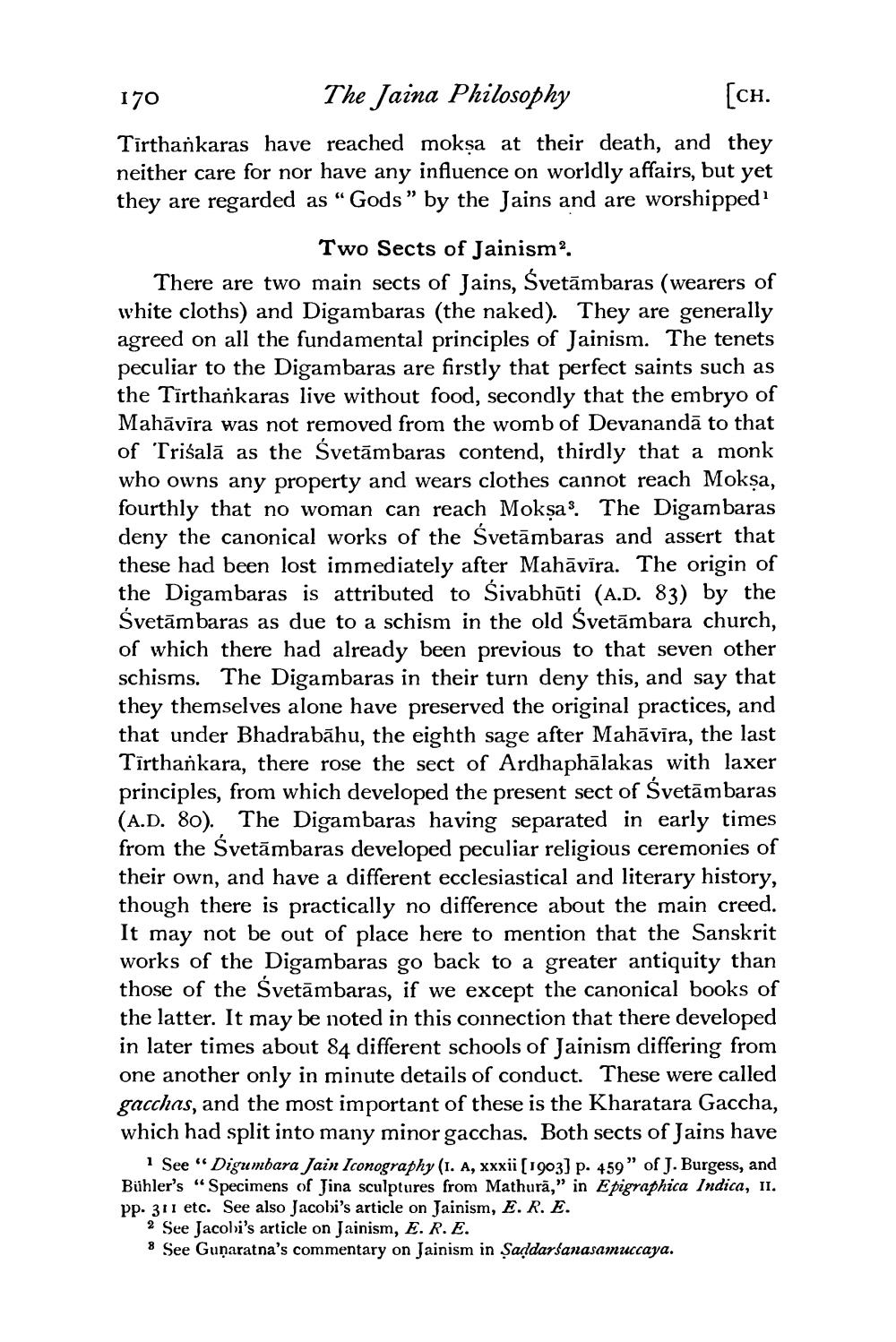________________
170
The Jaina Philosophy
[CH.
Tirthankaras have reached mokṣa at their death, and they neither care for nor have any influence on worldly affairs, but yet they are regarded as "Gods" by the Jains and are worshipped1
Two Sects of Jainism2.
There are two main sects of Jains, Švetāmbaras (wearers of white cloths) and Digambaras (the naked). They are generally agreed on all the fundamental principles of Jainism. The tenets peculiar to the Digambaras are firstly that perfect saints such as the Tirthankaras live without food, secondly that the embryo of Mahavira was not removed from the womb of Devanandā to that of Trisala as the Svetambaras contend, thirdly that a monk who owns any property and wears clothes cannot reach Mokṣa, fourthly that no woman can reach Mokṣa3. The Digambaras deny the canonical works of the Svetambaras and assert that these had been lost immediately after Mahāvīra. The origin of the Digambaras is attributed to Śivabhūti (A.D. 83) by the Śvetāmbaras as due to a schism in the old Svetambara church, of which there had already been previous to that seven other schisms. The Digambaras in their turn deny this, and say that they themselves alone have preserved the original practices, and that under Bhadrabahu, the eighth sage after Mahāvīra, the last Tirthankara, there rose the sect of Ardhaphalakas with laxer principles, from which developed the present sect of Śvetāmbaras (A.D. 80). The Digambaras having separated in early times from the Svetambaras developed peculiar religious ceremonies of their own, and have a different ecclesiastical and literary history, though there is practically no difference about the main creed. It may not be out of place here to mention that the Sanskrit works of the Digambaras go back to a greater antiquity than those of the Svetāmbaras, if we except the canonical books of the latter. It may be noted in this connection that there developed in later times about 84 different schools of Jainism differing from one another only in minute details of conduct. These were called gacchas, and the most important of these is the Kharatara Gaccha, which had split into many minor gacchas. Both sects of Jains have
1 See "Digumbara Jain Iconography (1. A, xxxii [1903] p. 459" of J. Burgess, and Bühler's "Specimens of Jina sculptures from Mathura," in Epigraphica Indica, II. pp. 311 etc. See also Jacobi's article on Jainism, E. R. E.
2 See Jacobi's article on Jainism, E. R. E.
8 See Gunaratna's commentary on Jainism in Saddarśanasamuccaya.




